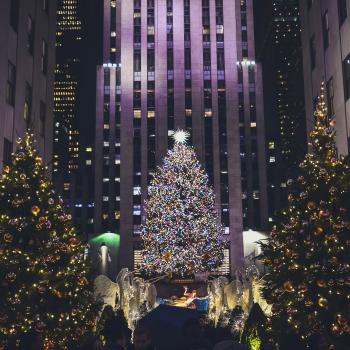As we enter the last month of what can be described as a tumultuous year, we are all no doubt gearing up to celebrate the holidays and beginning the annual practice of hoping the next year is better than the current one.

I’ve always loved New Years. Sometimes I describe it as my favorite holiday. I love the feeling of hope, of possibility, of newness that comes with a New Year. It has the “anything is possible” feeling.
As we start to look at the start of another year, I want to make a commitment to seeking and sharing the truth. One of the reasons 2020 has been so challenging is we have lost our ability (and our desire) to pursue truth at all costs.
Building Blindspots
How do you pursue truth? It is so much more difficult than it seems. We so often assume we know the truth. We likely do, to a certain degree. We are all carrying around at least a spark of something true. The problem comes when we hold so tightly and so aggressively to that spark that we disqualify ourselves from seeing the sparks (sometimes the roaring flames) within others. We all have a little truth in us. But the truth is too big for any one of us.
This creates the issue of blindspots. We don’t see what we don’t see. And since we are blind to it, we don’t even see that there is a problem. Meanwhile, there are elements of the truth (important elements) we are floating by. They are so close but we are not seeing, accepting, or utilizing them.
Seeing The Blindspots
So how do you see what you don’t see?

The first thing is to start with humility. You don’t know everything. You do have blindspots. And perhaps most importantly, exploring more truth does not necessarily mean you have to let go of the truth you are holding on to. If you are afraid to explore the truth outside you because it might cost the truth within you, I would argue what you are holding to within yourself is not actually the truth but some unhealthy mimic. Because the truth we have is not only compatible but interdependent on the truth without.
And so, we have to start with a sense of humility. Truth is an acquired taste. So many in this world have not untangled the difference between “what is true” and “what I want to hear”. Realizing there is a difference, acknowledging we are still in need of exploration, is the best place to start.
Secondly, we find our blindspots by getting feedback. Community is the great breeding ground for truth. And many of us (perhaps all of us) have worked hard to ensure our “community” consists of the people who look, think, and act exactly like we do. It feels safe. It feels like validation. But it can be dangerous to our pursuit of truth.
The best tool for finding your blindspots is feedback from the community. But if your community has the same blindspots as you, it can minimize the advantage. Travel. Serve. Move if you have to. Spend time in diverse settings and circumstances so you can be exposed to the diverse manifestations of truth the world has to offer. It is the best way to jolt yourself, to cause you to turn toward a spot that was otherwise blind and be able to say, “ah, there is some more truth right there!”












